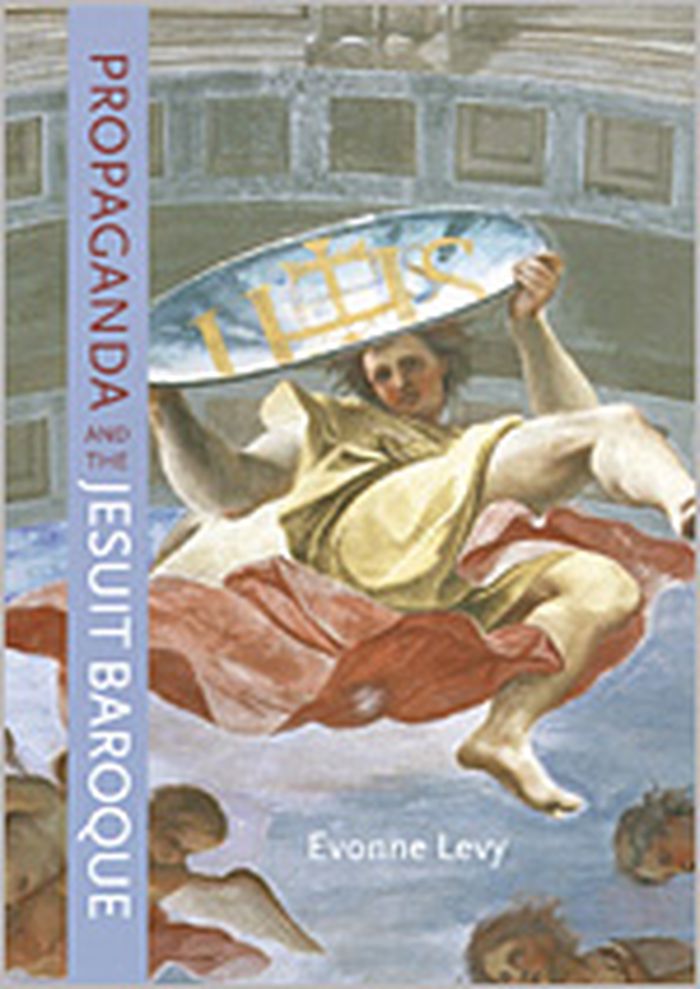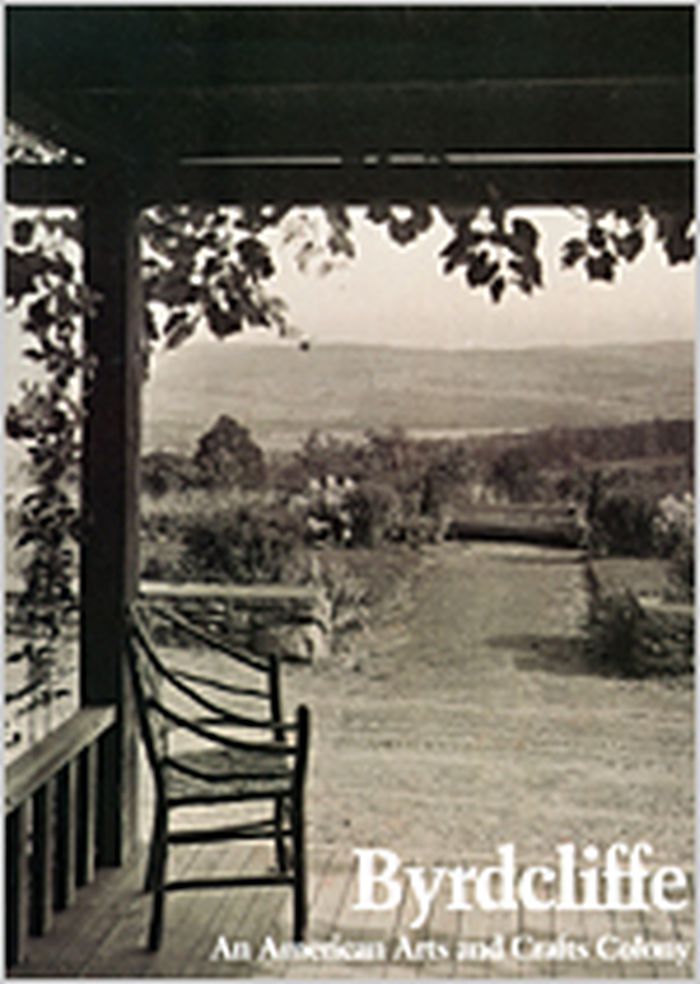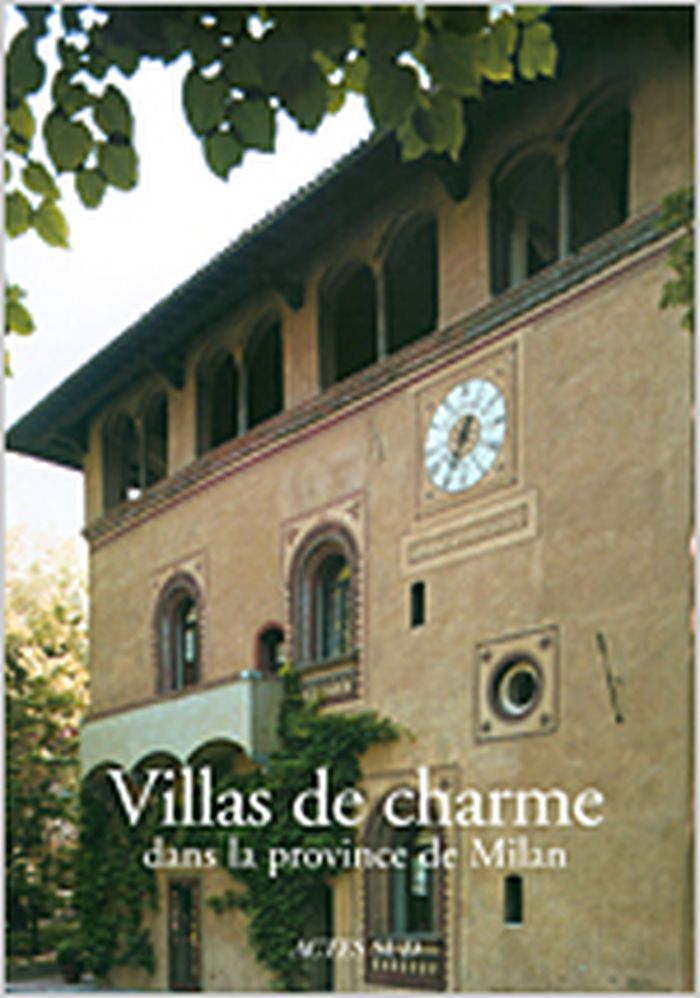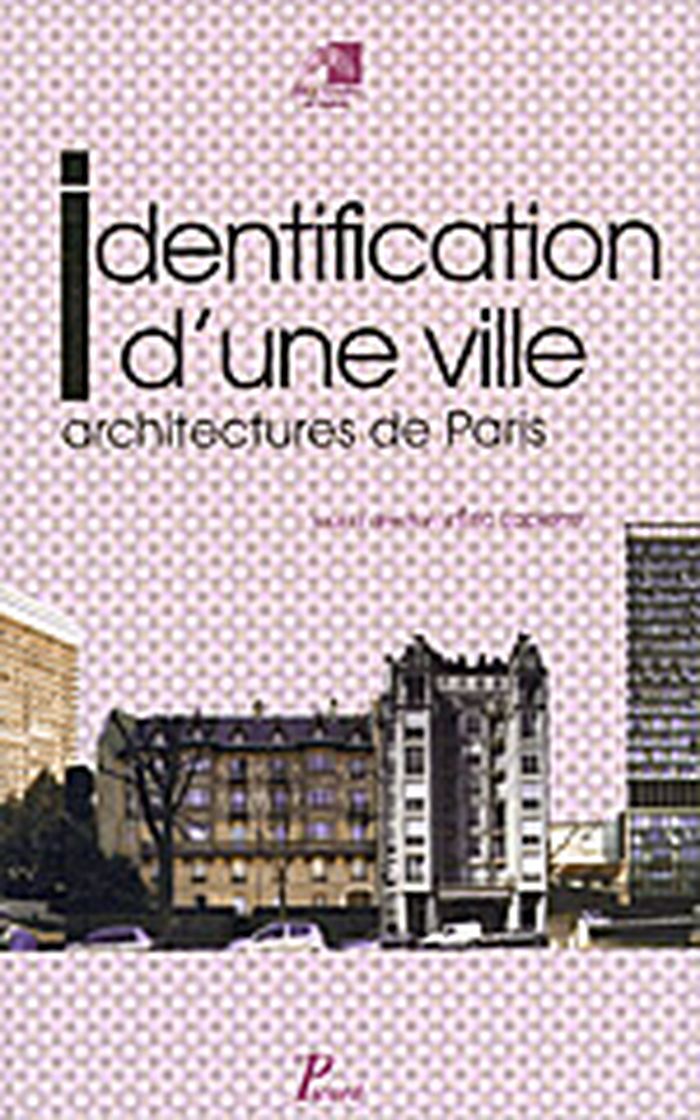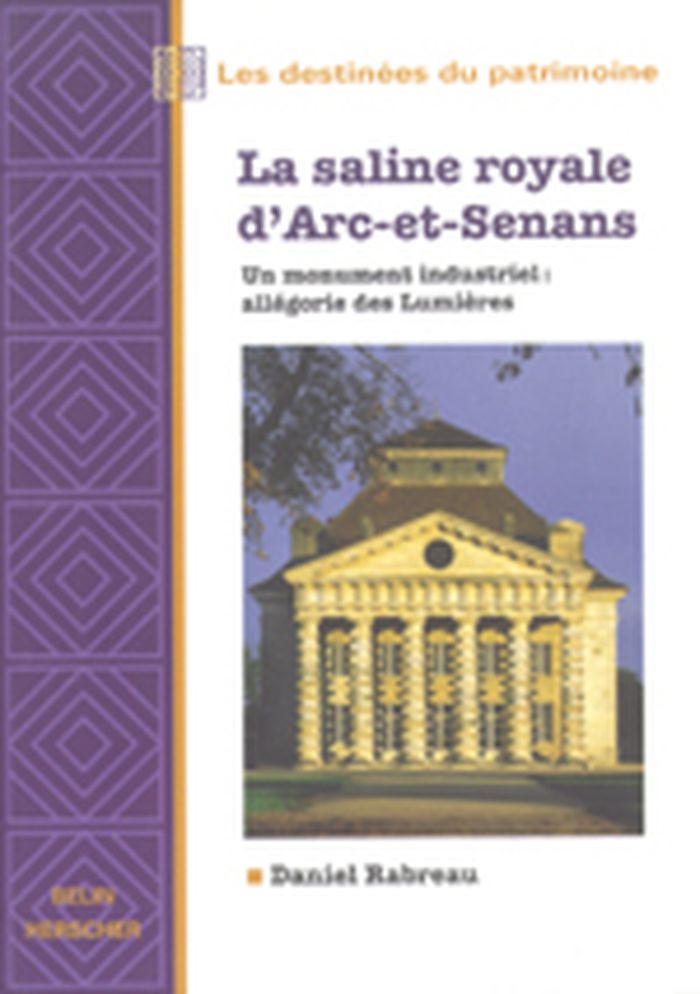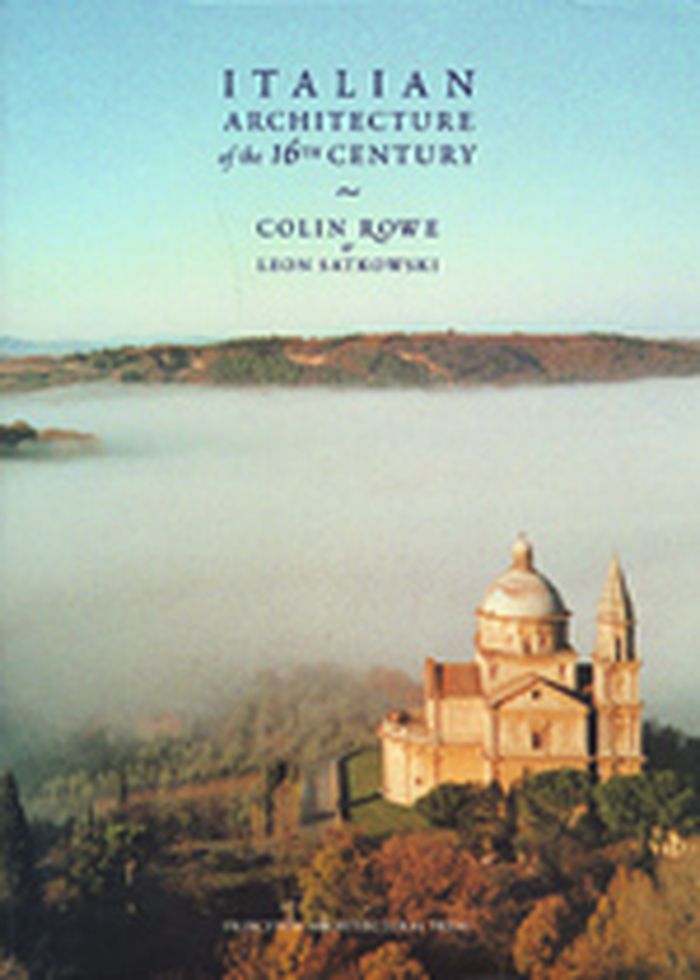$82.50
(available to order)
Summary:
In this provocative revisionist work, Evonne Levy brings fresh theoretical perspectives to the study of the "propagandistic" art and architecture of the Jesuit order as exemplified by its late Baroque Roman church interiors. The first extensive analysis of the aims, mechanisms, and effects of Jesuit art and architecture, this original and sophisticated study also(...)
Propaganda and the Jesuit Baroque
Actions:
Price:
$82.50
(available to order)
Summary:
In this provocative revisionist work, Evonne Levy brings fresh theoretical perspectives to the study of the "propagandistic" art and architecture of the Jesuit order as exemplified by its late Baroque Roman church interiors. The first extensive analysis of the aims, mechanisms, and effects of Jesuit art and architecture, this original and sophisticated study also evaluates how the term "propaganda" functions in art history, distinguishes it from rhetoric, and proposes a precise use of the term for the visual arts for the first time. Levy begins by looking at Nazi architecture as a gateway to the emotional and ethical issues raised by the term "propaganda." Jesuit art once stirred similar passions, as she shows in a discussion of the controversial nineteenth-century rubric the "Jesuit Style." She then considers three central aspects of Jesuit art as essential components of propaganda: authorship, message, and diffusion. Levy tests her theoretical formulations against a broad range of documents and works of art, including the Chapel of St. Ignatius and other major works in Rome by Andrea Pozzo as well as chapels in Central Europe and Poland. Innovative in bringing a broad range of social and critical theory to bear on Baroque art and architecture in Europe and beyond, Levy's work highlights the subject-forming capacity of early modern Catholic art and architecture while establishing "propaganda" as a productive term for art history.
History until 1900
$41.95
(available to order)
Summary:
Byrdcliffe was, and remains, a place of haunting beauty. One hundred years ago,it was established as an Arts and Crafts colony in the heart of the Catskill Mountains. Craftsmen, writers, and musicians came, lured by the atmosphere of creativity amid like-minded people. Furniture, pottery, paintings, metalwork, and textiles were all made there and the people themselves(...)
History until 1900
April 2004, Ithaca
Byrdcliffe : an American Arts and Crafts colony
Actions:
Price:
$41.95
(available to order)
Summary:
Byrdcliffe was, and remains, a place of haunting beauty. One hundred years ago,it was established as an Arts and Crafts colony in the heart of the Catskill Mountains. Craftsmen, writers, and musicians came, lured by the atmosphere of creativity amid like-minded people. Furniture, pottery, paintings, metalwork, and textiles were all made there and the people themselves became an interwoven part of the fabric of the place. This is the story of the first years of the colony, the artists who visited, and the artistic community they fostered in Woodstock, New York.
History until 1900
$108.00
(available to order)
Summary:
Entre le XVIe et le XVIIIe siècle, la région de Milan connaît une intense période d’art et d’architecture qui se manifeste à travers des villas : on voit éclore en effet un nombre important de résidences réalisées par une aristocratie éclairée. Aboutissement des activités productives du territoire, les villas étaient une synthèse d’exigences économiques, expressives et(...)
Villas de charme dans la province de Milan
Actions:
Price:
$108.00
(available to order)
Summary:
Entre le XVIe et le XVIIIe siècle, la région de Milan connaît une intense période d’art et d’architecture qui se manifeste à travers des villas : on voit éclore en effet un nombre important de résidences réalisées par une aristocratie éclairée. Aboutissement des activités productives du territoire, les villas étaient une synthèse d’exigences économiques, expressives et symboliques, mais définissaient également un style de vie et une vision du monde : une philosophie du “vivre sain” en contact avec la nature, au milieu des études et des plaisirs tournés vers un otium foisonnant. Les “ville di delizia” (nous devons cette appellation du XVIIIe siècle à Marc’Antonio Dal Re et à Pietro Verri) représentent un phénomène marquant de l’histoire de l’architecture et de la décoration et, plus généralement, de l’histoire de la culture et du goût : le patriciat de la grande ville lombarde (sans seigneur et sans cour) a souhaité projeter ses propres attentes et se célébrer lui-même dans ces villas.
History until 1900
books
Scottish architecture
$26.00
(available to order)
Summary:
An illustrated survey of the complete history of Scottish archtecture, from the circular houses of Skara Brae to the new Parliament at Edinburgh.
History until 1900
June 2004, London
Scottish architecture
Actions:
Price:
$26.00
(available to order)
Summary:
An illustrated survey of the complete history of Scottish archtecture, from the circular houses of Skara Brae to the new Parliament at Edinburgh.
books
June 2004, London
History until 1900
$105.00
(available to order)
Summary:
Three thousand years ago the Greeks built monuments that have come to epitomize Western culture, such as the Parthenon and the Temple of Athena. In this book, a renowned architectural historian re-examines buildings and sites of Greek classical antiquity, not as expressions of pedantic, archaic rules, but as truly innovative paradigms - and shows how they gave rise to(...)
Classical Greek architecture : the construction of the modern
Actions:
Price:
$105.00
(available to order)
Summary:
Three thousand years ago the Greeks built monuments that have come to epitomize Western culture, such as the Parthenon and the Temple of Athena. In this book, a renowned architectural historian re-examines buildings and sites of Greek classical antiquity, not as expressions of pedantic, archaic rules, but as truly innovative paradigms - and shows how they gave rise to modern architecture. Classical Greek Architecture features fascinating archival photographs, site maps, and architectural plans. It discusses not only the technology but also the myths, rituals, social structures, and political conflicts that left their mark in the ultimate design of a given building. With chapters covering a range of topics from the status of Greek architecture today and the uses of the various types of buildings to the influences of African and Asian cultures on the Greeks, this is a thorough, scholarly, yet accessible work of reference.
History until 1900
books
$78.00
(available to order)
Summary:
London’s modest eighteenth-century houses - those inhabited by artisans and laborers in the unseen parts of Georgian London - can tell us much about the culture of that period. This fascinating book examines largely forgotten small houses that survive from the eighteenth century and sheds new light on both the era’s urban architecture and the lives of a culturally(...)
The small house in eighteenth-century London
Actions:
Price:
$78.00
(available to order)
Summary:
London’s modest eighteenth-century houses - those inhabited by artisans and laborers in the unseen parts of Georgian London - can tell us much about the culture of that period. This fascinating book examines largely forgotten small houses that survive from the eighteenth century and sheds new light on both the era’s urban architecture and the lives of a culturally distinctive metropolitan population. Peter Guillery discusses how and where, by and for whom the houses were built, stressing vernacular continuity and local variability. He investigates the effects of creeping industrialization (both on house building and on the occupants), and considers the nature of speculative suburban growth. Providing rich and evocative illustrations, he compares these houses to urban domestic architecture elsewhere, as in North America, and suggests that the eighteenth-century vernacular metropolis has enduring influence.
books
July 2004, New Haven / London
History until 1900
$75.00
(available to order)
Summary:
Quelle est l'identité architecturale de Paris ? Sur quelles dispositions presque inconscientes repose le visage, si familier qu'on ne le détaille jamais, des rues de la capitale ? Comment au cours des siècles, s'est constituée l'architecture parisienne, et possède-t-elle des caractéristiques spécifiques ? Comment des débats, menés à un niveau international, ont-ils(...)
Identification d'une ville : architectures de Paris
Actions:
Price:
$75.00
(available to order)
Summary:
Quelle est l'identité architecturale de Paris ? Sur quelles dispositions presque inconscientes repose le visage, si familier qu'on ne le détaille jamais, des rues de la capitale ? Comment au cours des siècles, s'est constituée l'architecture parisienne, et possède-t-elle des caractéristiques spécifiques ? Comment des débats, menés à un niveau international, ont-ils trouvé des applications parisiennes qui se sont imprégnées de la spécificité locale ? Et comment imaginer le Paris contemporain, en construisant l'architecture qui sera le patrimoine de demain, sans nostalgie mais en s'inscrivant dans une culture originale ? Autant de questions posées ici, de manière concrète, pour que Paris reste une capitale habitée, vivante, et en perpétuel devenir.
History until 1900
$45.95
(available to order)
Summary:
La saline royale d’Arc-et-Senans est un des tout premiers monuments industriels de l’Ancien Régime. L’ampleur du parti, l’éclat artistique, le graphisme savant, le projet visionnaire : tout est exceptionnel dans cette manufacture, que son auteur rêvait d’entourer d’une ville idéale à la campagne. En renouvelant l’expression des formes, elle ennoblit une puissance(...)
La saline royale d'Arc-et-Senans : un monument industriel : allégorie des Lumières
Actions:
Price:
$45.95
(available to order)
Summary:
La saline royale d’Arc-et-Senans est un des tout premiers monuments industriels de l’Ancien Régime. L’ampleur du parti, l’éclat artistique, le graphisme savant, le projet visionnaire : tout est exceptionnel dans cette manufacture, que son auteur rêvait d’entourer d’une ville idéale à la campagne. En renouvelant l’expression des formes, elle ennoblit une puissance financière redoutée, celle de la Ferme générale, chargée de collecter et de gérer, pour le roi, les ressources de l’impôt sur le sel, la gabelle. Mais, par le talent de son créateur, Claude-Nicolas Ledoux (1736-1806), et par la commande de Louis XV lui-même, elle est plus encore : un des symboles de la monarchie éclairée et des réformes que celle-ci promut pour enrayer la contestation dans la société des Lumières et répondre aux mutations économiques, sociales et philosophiques. Fermée à la fin du XIXe, la saline faillit périr au début du XXè siècle. Sa vie chaotique parmi les monuments historiques, jusqu’à la Vè République qui y crée un centre culturel, révèle à la fois la fascination qu’exerce son architecture, unique au monde, et la difficulté d’associer, aujourd’hui, un imaginaire historique à ses espaces.
History until 1900
books
The Gothic Revival
$22.99
(available to order)
Summary:
‘The Gothic Revival’, writes Michael Lewis, ‘is more than a fashion craze for pointed arches and pinnacles. During its years of greatest influence, it subjected every aspect of art, belief, society, and labour to intense intellectual scrutiny, using the Middle Ages as a platform from which to judge the modern world.’ It is the unique merit of "The Gothic Revival"(...)
The Gothic Revival
Actions:
Price:
$22.99
(available to order)
Summary:
‘The Gothic Revival’, writes Michael Lewis, ‘is more than a fashion craze for pointed arches and pinnacles. During its years of greatest influence, it subjected every aspect of art, belief, society, and labour to intense intellectual scrutiny, using the Middle Ages as a platform from which to judge the modern world.’ It is the unique merit of "The Gothic Revival" that it gives as much attention to the ideas that gave Gothic architecture its emotional and intellectual power as it does to its great monuments. The eighteenth century admired the Gothic for its sense of decay and melancholy; the nineteenth century first cherished its religious piety, then its superb engineering. In the course of the Revival the Gothic was attached to social movements of every sort – from political liberalism to patriotic nationalism to labour reform. Like Marxism, which also drew lessons from medieval society, the Gothic Revival seemed to offer a comprehensive response to the dislocations and traumas of the Industrial Revolution. By the early twentieth century, the Gothic Revival had outlived its ideals. In recent years, however, the climate of opinion has changed, and we are ready to understand, appreciate and learn from it.
books
June 2002, London
History until 1900
$54.00
(available to order)
Summary:
The book emphasizes the leading subjects of the 16th-century Reniassance: the architects (Bramante, Vignola), the patrons (Leo X, Cosimo I de Medici), the artists (Michelangelo), and the cities (Rome, Venice, Florence).
Italian architecture of the 16th century
Actions:
Price:
$54.00
(available to order)
Summary:
The book emphasizes the leading subjects of the 16th-century Reniassance: the architects (Bramante, Vignola), the patrons (Leo X, Cosimo I de Medici), the artists (Michelangelo), and the cities (Rome, Venice, Florence).
History until 1900
